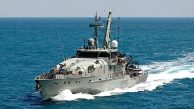
Potential Second Submarine Purchase Could Jeopardize Navy’s Next-Gen Fighter Program, Warns Defense Secretary
Picture: The Virginia-class attack submarine Minnesota (SSN 783) is under construction at Huntington Ingalls Newport News Shipbuilding. (U.S. Navy photo courtesy of Newport News Shipbuilding/Released)
The push by lawmakers to authorize a second Virginia-class submarine in the 2025 fiscal year may disrupt the US Navy’s development of its sixth-generation fighter, Defense Secretary Lloyd Austin warned in a letter dated September 26. This move could potentially delay the new aircraft’s debut, which is crucial for the Navy’s future capabilities.
Addressing the leaders of the armed services committees, Austin expressed concerns about provisions in both the House and Senate versions of the National Defense Authorization Act (NDAA) that include funding for a second Virginia-class attack submarine. His letter highlighted that accommodating this additional funding would severely impact the Next Generation Fighter program, stating that adding a second submarine would force the Department of Defense to cut $400 million from the fighter project, rendering it unexecutable.
“Reducing the Next Generation Fighter program by $400 million would degrade the Navy’s ability to field critical next-generation aircraft required between 2033 and 2037,” Austin emphasized.
The House, in its version of the NDAA passed in June, authorized $1 billion for a second submarine, while the Senate Armed Services Committee approved $400 million in incremental funding toward building the additional vessel. Despite these efforts, Austin advised lawmakers to stick to the Navy’s original budget, which calls for only one Virginia-class submarine. He argued that the defense industry cannot deliver a second submarine on a reasonable schedule and cautioned against the financial trade-offs required to fund it.
Although the final decision on this funding lies with congressional appropriators, they have shown hesitation. The House’s defense appropriations bill aligns with the Navy’s request for one Virginia-class submarine, while the Senate Appropriations Committee added $357 million to begin purchasing materials for a second vessel. However, Austin’s letter did not address the appropriations bills directly.
The Navy’s sixth-generation fighter, also known as the F/A-XX or Next Generation Air Dominance program, has already faced financial challenges in fiscal year 2025. Budget constraints forced the service to delay about $1 billion in anticipated funding. Asked whether the program could face further delays, similar to the Air Force’s pause on its own future fighter effort, Chief of Naval Operations Adm. Lisa Franchetti confirmed that the Navy remains committed to the program. She added that three companies are currently competing for the contract.
Franchetti reiterated that the F/A-XX will replace the aging F/A-18 and EA-18G Growler aircraft in the 2030s and will feature advanced sensors, increased lethality, longer range, and integration with both manned and unmanned platforms. She also noted that the Navy has been closely observing the Air Force’s progress on its fighter program to ensure that both branches’ new capabilities are complementary.




